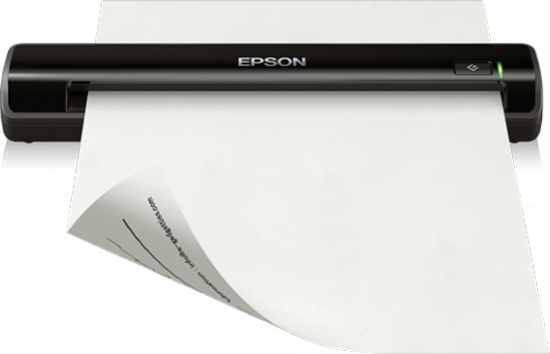While flatbed scanners can be picked up for next to nothing, sheet-fed scanners tend to be pricey purchases, typically starting at several hundred pounds. The DS-30, though, is rather cheaper. Even its top price of £180 is fairly low, and it can be snapped up for closer to £100 if you shop around. So where do you miss out, and is such a model really an improvement on a more traditional flatbed? The big advantage of sheetfeds is generally that they have a built-in automatic document feeder (ADF), allowing them to gobble up large bundles of documents at a time, spitting them out again a few minutes later after first converting them into a shiny searchable PDF file, or set of images. The DS-30, though, doesn’t do that. It restricts the user to manual-feed only so you’ll have to insert documents one page at a time. You’ll also have to do without the duplex facilities that many of these devices have, as it can only scan one side at a time – if you want to convert a double-sided sheet, you’ll need to feed it in twice. It stretches to A4, although there are no facilities to handle A3 and larger. Theoretically, a flatbed scanner would offer a better alternative to a single-page sheet-fed model like the DS-30, since the flatbed would cost less, and would probably offer more quality and performance. However, where the DS-30 wins out is through portability. It weighs just 325g – around half the weight of the nimble Xerox Mobile – and its modest dimensions and ability to draw power entirely from the USB port make it easy to slip into a bag. For those needing to scan while on the road, the DS-30 is an excellent choice. A neat carrying case is even included. Once you’ve got past the single-sheet simplex limitations, the DS-30 is a very handy little gadget. It’s fairly fast to install, taking just 5-10 minutes to setup in Windows. The healthy bundle includes Epson’s elegant Scan driver, letting you effortlessly pick from a range of quality settings and features. Proficient business card printing is handled by Presto BizCard 5, and the ever-reliable ABBYY FineReader 9.0 Spring is there to facilitate highly accurate OCR – the Epson was even able to make a good job of our demanding dictionary page test. It’s not a particularly fast scanner, requiring 13 seconds for 200 dpi A4 output, 16 seconds for 300 dpi, and 53 seconds for output at the top resolution of 600 dpi. However, we were very satisfied with the scan quality. Particularly at 300 dpi and beyond, colours were brimming with life, while characters are defined with clarity and sharpness. This may be a budget scanner in many respects, but the quality is strong.
